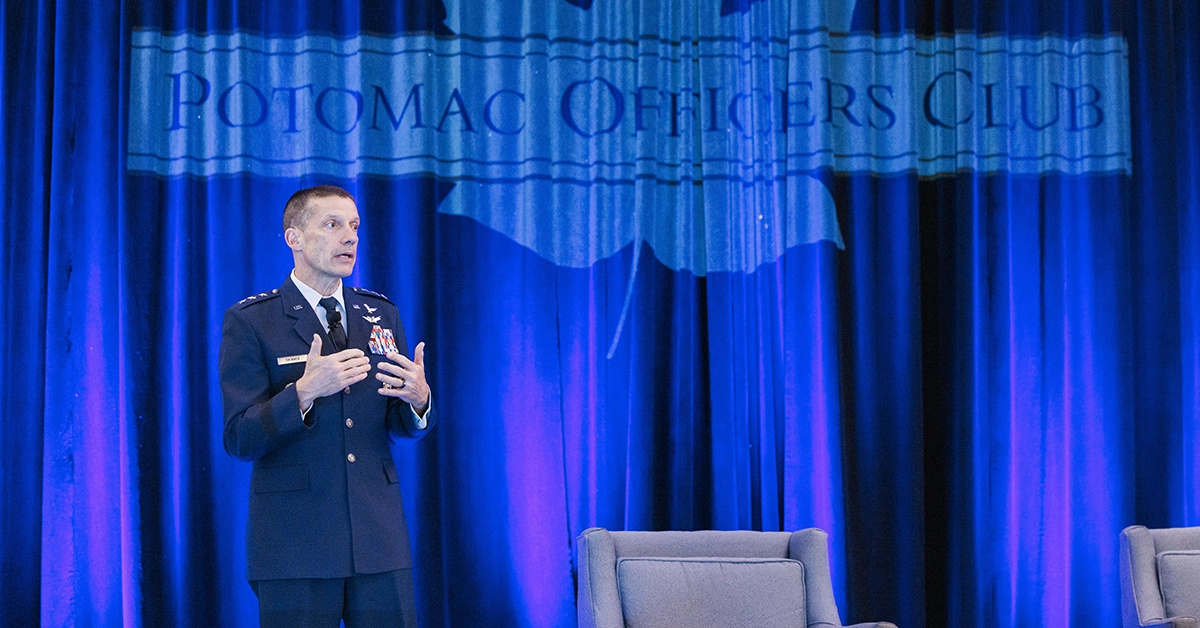As data’s influence on the battlefield grows, the U.S. Army has zeroed in on its cloud capabilities to deliver this critical component of decision making to the edge. To advance this goal, the service branch established its Enterprise Cloud Management Agency, which is now home to several cloud architectures.
“I will argue that we’ve been using information for years – ever since the United States Army has been established,” ECMA Acting Director Gregg Judge said during his keynote address at the Potomac Officers Club’s 8th Annual Army Summit last week.
“But what we haven’t been able to do is really exploit the vast amount of data that we have in the United States Army, and it is an immense amount of information regardless of where it’s at and how it is generated,” he emphasized.
One way ECMA is helping the Army leverage these enormous amounts of data is through cARMY, a cloud architecture that Judge said is continuously being built out.
In line with Judge’s expectations for the system, cARMY is heading toward being used as a weapons platform across the service branch. Right now, Judge’s priorities for cARMY are scaling the platform and boosting its resiliency.
“One of the things that is really imperative to do this, though, is thinking about how we marry information or data sets that originate from sensors at higher classification levels that are owned by a joint service or coalition partner,” he said.
Judge also aims to bring more of what cARMY has to offer to the edge. Currently, he said, ECMA is “working diligently to make those services a little bit more robust and consumable,” which he said entails establishing a presence in different areas of the world.
“When push comes to shove and all is said and done, we want to use the cloud as a weapons platform in the United States Army where it really makes sense and where we can deliver capabilities and services,” added Judge.
Another area he is focusing on is creating a pathway for users to design software that can be immediately used in warfighting.
To make these already progressing goals a reality, Judge said ECMA is currently conducting a variety of experiments to determine how mass amounts of data can be brought together with these developing platforms.
“There are a tremendous amount of sensors. There are a tremendous amount of systems that we don’t own. There are a tremendous amount of data sources that we don’t own, and there is a tremendous amount of data flows that we don’t have standards around,” said Judge.
The challenge, he said, is building a “coherency,” between all of this information and its purpose by identifying where it is relevant to a given use case. When experimenting with this concept, ECMA identified a straightforward dashboard for commanders as something that will help connect the technology with its intended function.
Pinpointing what information is on hand and what is immediately useful, said Judge, is a simple question that ends up being “unbelievably complex” in practice.
Already, ECMA has begun testing some of these systems and gathering feedback from users, a process that Judge revealed has shown success in exercises related to tracking ship parts and medical supplies.
The ideal of a data-centric Army “is really becoming a realization today,” more so than Judge said he has ever seen before.


Want to know more about how the federal government is looking toward modernization to achieve mission success? The Potomac Officers Club will host its 9th Annual Intel Summit on September 21, where intelligence community leaders and industry experts will come together to tackle the role of modernization and its role in countering today’s evolving threats. To learn more and register to attend the event, click here.








